Behavioral segmentation
Selling a product to an entire customer base without prior segmentation is a bit like a bazooka duck hunt. It may be effective, but very expensive, both from the point of view of time and money.
To leverage your marketing budget, target the right audience, better craft your selling strategy, sell faster, and build long-term customer loyalty, you need high-precision weapons. One of them is behavioral segmentation.
What is behavioral segmentation?
Behavioral segmentation divides the market into minor groups based on people’s buying habits, needs, and wants. Customers performing similar buying patterns can be clubbed together in a group that will be targeted with higher precision.
Building customer segments makes it easier to interact with your shoppers’ needs in eCommerce, leading to more personalization and higher conversions.
What are the four types of behavioral segmentation?
In modern marketing practice, it’s customary to distinguish between four key types of segmentation based on buyer behavior: usage frequency, occasion-based purchases, benefits sought, and brand loyalty.
One or more of these behavioral segmentation techniques can be used concurrently or in combination with other types. Let’s take a closer look at each of them.
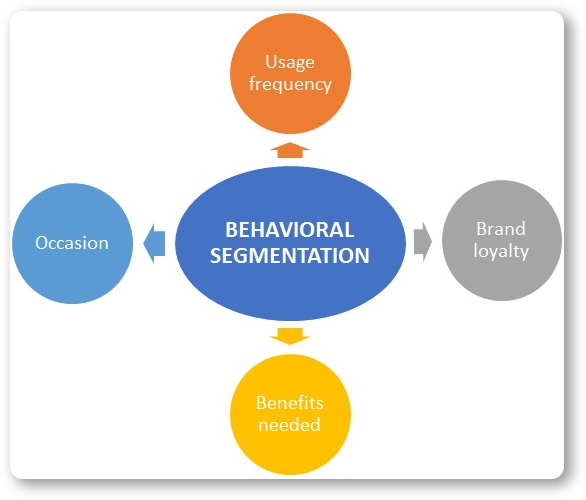
1. Segmentation based on usage frequency
Segmentation by purchase frequency or the intensity of product use is an example of a reasonably common behavioral market segmentation. It rests on the understanding of how often a consumer buys and uses a product.
According to the intensity of the product consumption, customers can be classified as:
- Heavy (ideal) users. These are brand adherents who use its product regularly and hurry to purchase it as soon as it ends.
- Medium users. These are regular customers who use the product less frequently. Sometimes there is a time lag in their consumption — between the emerging need and the purchase.
- Light users. They buy a product of a brand irregularly and can refuse to use it at any time.
- Non-users. They don’t use the product but show a certain level of interest in the category, so they can be targeted as prospects.
The data for the segmentation can be easily harvested from your website, and you can optimize your marketing campaigns to match different behavioral patterns with a compelling message.
For example, you can advertise discounts to people who have spent more than, let’s say, $500 in your online store but haven’t shopped with you for quite a while. Or you can craft an email drip campaign to send browse abandonment follow-ups based on the items your customers looked through but never bought.
In email marketing, you can analyze the subscribers’ behavior based on the degree of activity (whether they read your emails actively, occasionally, or don’t read them at all) and adjust your marketing strategy correspondingly to work with the customer base more efficiently.
As it costs five times as much to attract new customers than to retain the existing ones, you can save a lot of money when you reactivate sleeping contacts in your email list with the help of a crafted re-engagement email campaign.
Just look how captivating and funny some re-engagement emails can be. These two below from Yes Marketing and Smile.io could bring back almost any contact that has gone dormant:
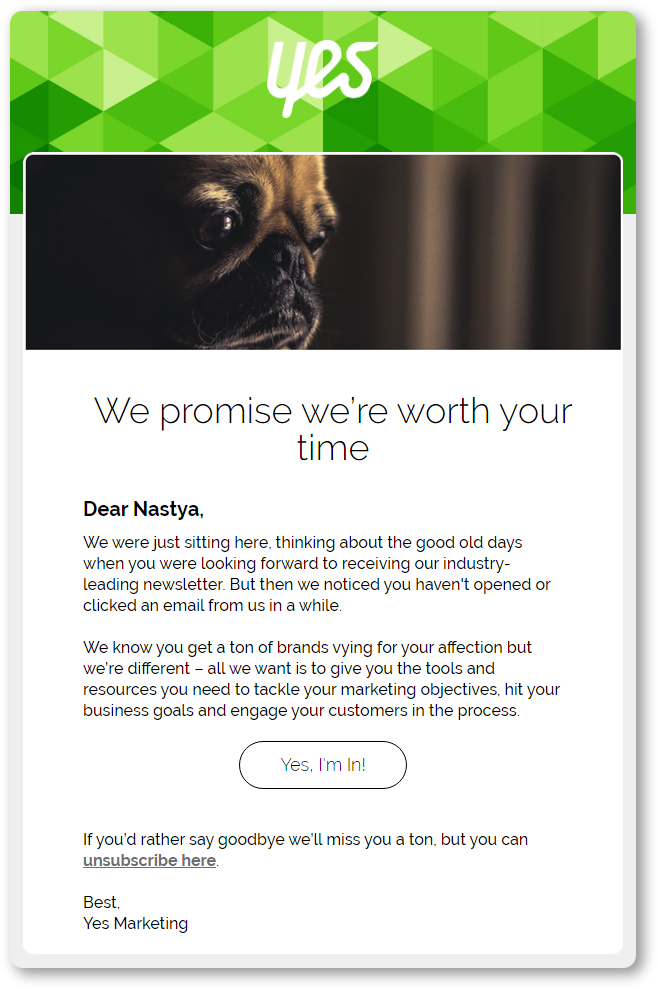
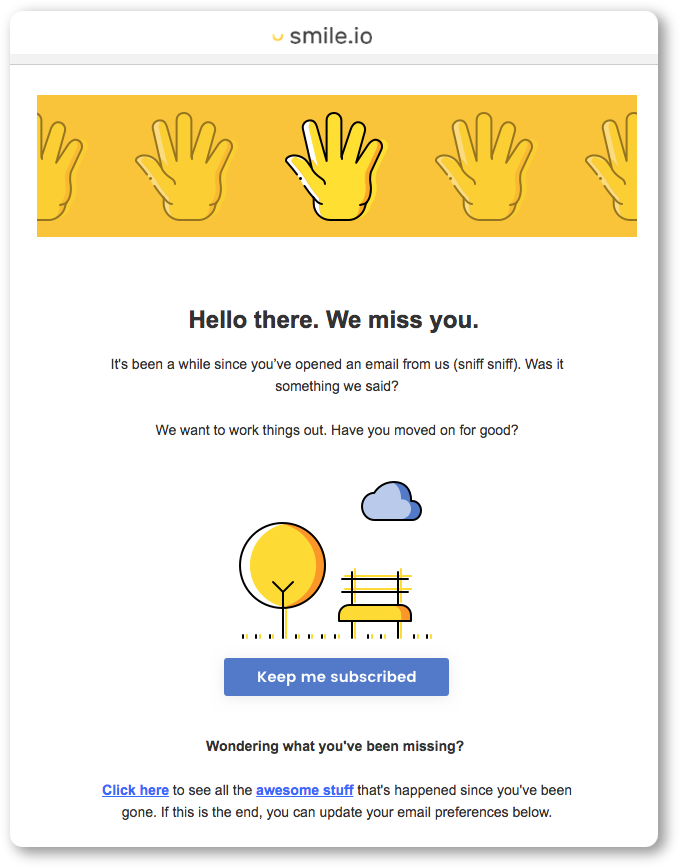
2. Occasion-based segmentation
Interaction with your customers will be much more meaningful if you can identify a consumer’s actual emotional state at the right moment. That’s the core of occasion-based behavioral segmentation that targets customers who want a specific product for a particular occasion or event.
The best example of occasion-based segmentation is personal events like birthdays and anniversaries. It is relevant to make special discounted offers, happy hours, or a free shipping guarantee on these special occasions.
Just check out the Grammarly anniversary email example with a special offer:
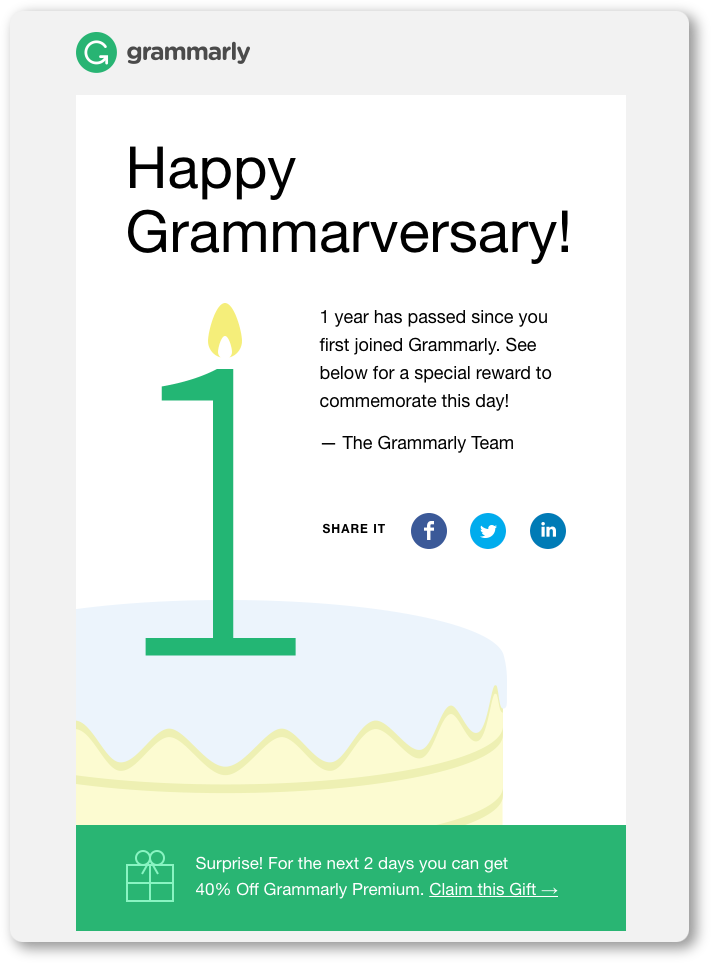
This type of behavioral segmentation also works well for categories of products or services that consumers use regularly. These categories include beverages, going out to eat, apps, and music/video/streaming content purchases, to name just a few.
For example, special offers with eye-catching messages will be relevant when selling energy drinks based on their time-bound consumption: “Afternoon Workday Slump” or “Late Night Recharge.”
3. Segmentation based on benefits sought
It’s not a secret that different customers often seek different value propositions from the same product or service. Behavioral marketing segmentation based on this difference is called benefit segmentation. Brands often use it to tailor their campaigns to reach the specific customer segment, which helps boost lead generation and improve customer retention.
For example, it makes sense to apply benefit segmentation to mobile phone users as their expectations from the gadget may vary. In this case, the segments can include:
- work-oriented customers,
- highly social customers,
- status-oriented customers (those who perceive smartphones as a status symbol).
Customers from the first segment are likely to prefer buying inexpensive, solid, and durable phones.
The second segment will expect easy-to-use phones stuffed with the latest tech features.
The third group of customers will want their phones to be expensive, technologically advanced, stylish, and posh.
Determining the main driving force behind the purchase for specific buyer categories will improve customer engagement and satisfaction. New customers will be hooked by your well-crafted messages, while existing buyers will be happy to see your product or service match their desires, so they will be less likely to switch to your competitors.
Benefit segmentation will also empower you to create good recommendation engines to make accurate predictions of products or features that buyers may inquire about in the future.
Snov.io, for example, offers monthly and annual plans to its customers to match their actual needs in prospect outreach. Of course, the needs of a big sales team will differ much from the needs of a solopreneur who might not need many additional advanced features. That’s why the price range has so many variables.
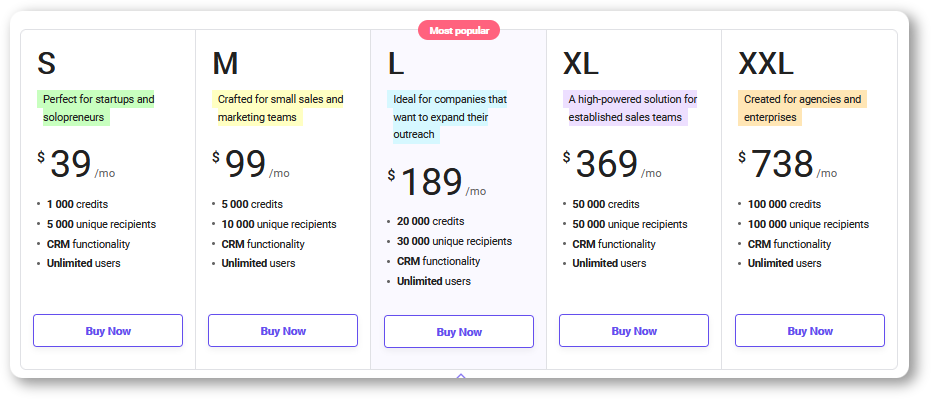
Such a precise benefit-based approach opens opportunities to optimize the customer’s journey and expand the customer database.
4. Segmentation based on brand loyalty
“Audience is everything,” the famous marketers’ saying goes. Indeed, loyal customers, having had a positive experience with your brand, provide your business with a steady revenue stream and higher profit margins. Moreover, they become brand advocates and eagerly refer your company to others.
Behavioral market segmentation based on loyalty is aimed to identify dedicated users of your brand to develop special rewarding programs for them to show how valuable they are for you.
For example, you can send your most loyal customers automated triggered email campaigns similar to those of Canadian tea seller DavidsTea.
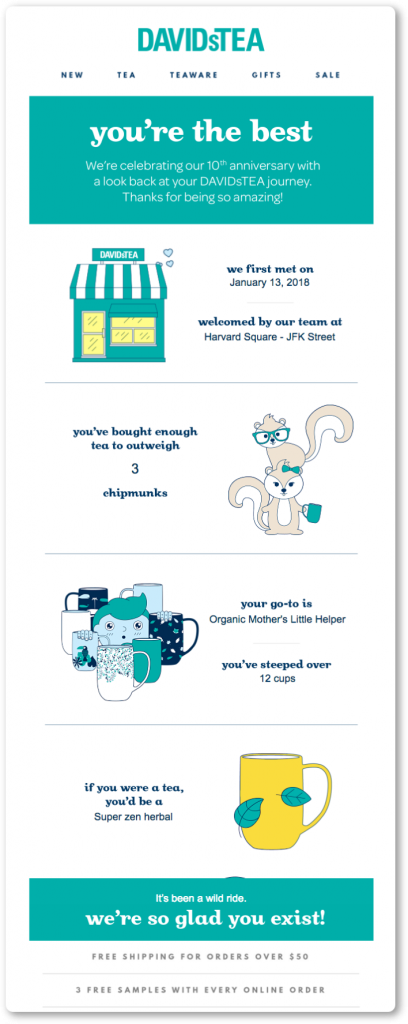
At a specific anniversary with the brand, its loyal clients could receive a unique ‘look back’ email reminding them about their first purchase in a light and funny way. This sort of a ‘thank you for being with us’ reminder makes the customer feel valued and continue buying.
Wrapping up
Many businesses now use behavioral marketing segmentation initiatives for customer acquisition and retention, CRM, product development, cross-selling & up-selling, media planning, and much more. It helps develop an intelligent marketing strategy and efficiently use valuable time and budgets.
And if you need advanced tools to segment your customer base and create a great targeted email campaign, Snov.io is here for you!
















